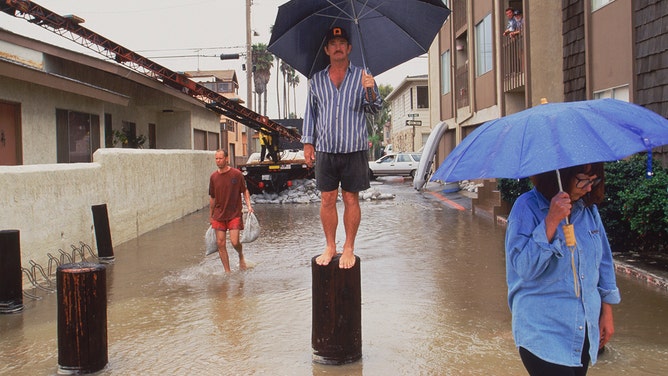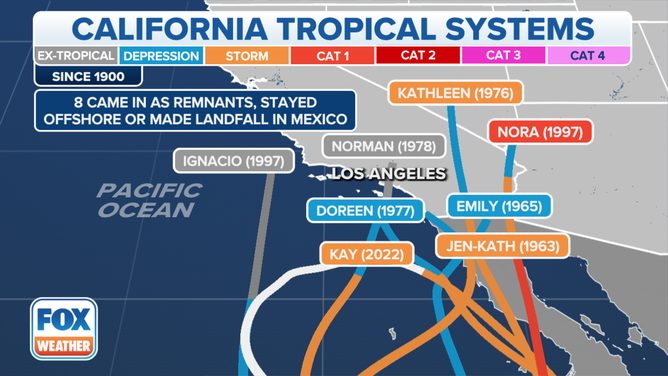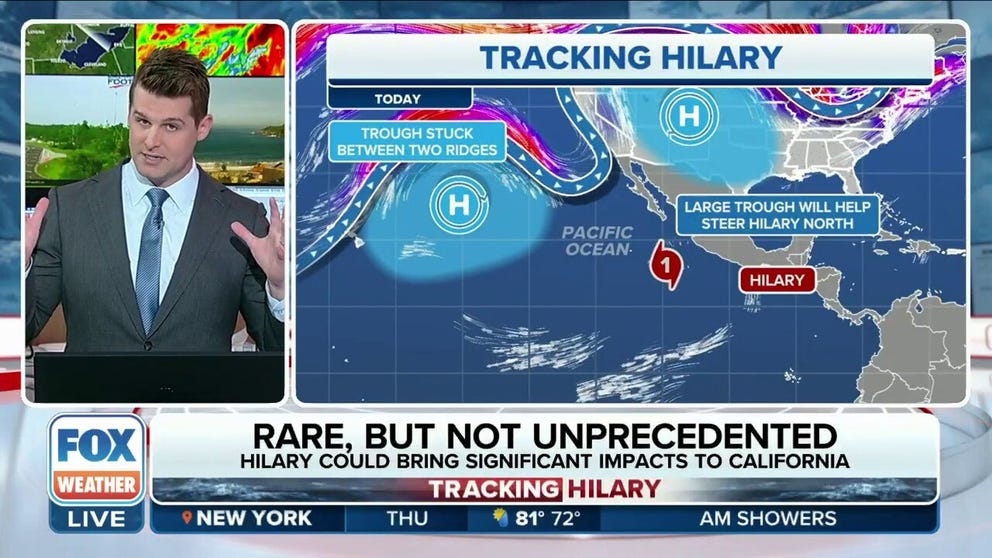When was the last time a hurricane or tropical storm hit California?
Tropical storms or hurricanes rarely make landfall in California, with records indicating it happens perhaps once a century. As Hurricane Hilary approaches Southern California this week, many are curious about the last time the state experienced the impact of such a storm.
Hurricane Hilary could bring significant impacts to California
Hurricane Hilary rapidly intensified Thursday after developing from a tropical storm the day prior. Forecasters warn that it could significantly impact Southern California and the Southwest by the end of this week and into next week.
California is rarely discussed in the context of the tropics, but that is exactly what is happening this week with Hurricane Hilary.
As the storm intensifies in the eastern Pacific, it is heading toward Southern California. A hurricane is not coming to Los Angeles, but the storm could affect the city, as well as San Diego, California, and Reno, Nevada – all within the cone.
The system is expected to arrive in the Golden State as a tropical storm as it will weaken upon approach. Expect heavy rain in Southern California and the Southwest U.S. with breezy conditions.
"Hilary has the potential to bring significant impacts to the Baja California Peninsula and portions of the southwestern United States this weekend and early next week, including after it becomes post-tropical," the National Hurricane Center (NHC) said in its an advisory Thursday.
WHAT IS THE ‘CONE OF UNCERTAINTY’ IN HURRICANE FORECASTS?

(FOX Weather)
1997 Hurricane Nora
On Sept. 24, 1997, Hurricane Nora impacted California and Arizona as a tropical storm, causing heavy rainfall and hundreds of millions of dollars in damage to agriculture.
The hurricane reached Category 4 strength off Mexico's west coast, with winds up to 130 mph. It made landfall three times in Baja California, twice as a hurricane and once as a tropical storm. It maintained tropical-storm strength as it crossed into the U.S. near the California-Arizona border.
HOW ARE HURRICANES RATED? THE SAFFIR-SIMPSON HURRICANE WIND SCALE EXPLAINED

Seal Beach residents are seen among flooding on Sept. 25, 1997, after Hurricane Nora near Los Angeles in Southern California.
(David Butow/Corbis / Getty Images)
Nora was the last tropical storm to enter California or Arizona. Past storms include the 1939 Long Beach Tropical Storm and Tropical Storm Katrina in Arizona in 1967.
The FOX Forecast Center noted that while Nora maintained tropical-storm strength as it moved from Mexico's Baja California into the U.S., this was not considered a landfall.
Nora's peak wind gust of 54 mph was clocked in Yuma, Arizona. The highest rain total of 11.97 inches was recorded in the Harquahala Mountains of Arizona.
Two deaths occurred in Mexico, while the California Highway Patrol reported about four traffic fatalities attributed to the weather in Southern California.
Power was knocked out to 125,000 customers across the Los Angeles metro, with widespread flash flooding reported across the region.
Nora caused $200 million in crop damage, with an estimated $40 million in lemon tree losses alone.
7 FACTS TO KNOW ABOUT HURRICANES

It is extremely rare for California to be hit directly by a tropical storm or hurricane, with records indicating it happens perhaps once a century.
(FOX Weather)
1939 Long Beach Tropical Storm
It is extremely rare for California to be hit directly by a tropical storm or hurricane, with records indicating it happens perhaps once a century.
The last time a tropical storm made an official landfall in California was on Sept. 25, 1939, at San Pedro, and it lost its hurricane strength before it hit the Los Angeles area.
The 1939 Long Beach Tropical Storm was the only known cyclone of tropical-storm strength (or greater) to make landfall in California. It also occurred during an El Niño phase.
Los Angeles received 5.66 inches of rain between Sept. 24-26, with 5.24 inches falling in a 24-hour span.
Winds gusted to 65 mph across Southern California, causing extensive damage. The death toll reached 45 on land, with as many as 48 dying on vessels at sea.
The storm caused $2 million in damage, which would be equivalent to $42 million in 2022.
Just prior to the storm's impacts, Southern California was experiencing a deadly heat wave. The temperature reached 107 degrees in Los Angeles on Sept. 20 and 100 degrees the day before the storm's impacts began.
The government established its first Los Angeles Weather Bureau office in February 1940 after the public was caught off guard by the storm.
